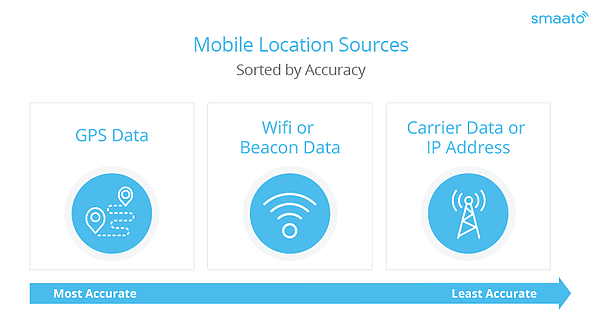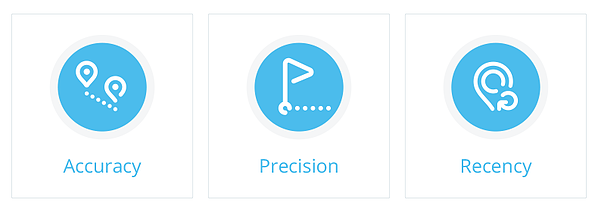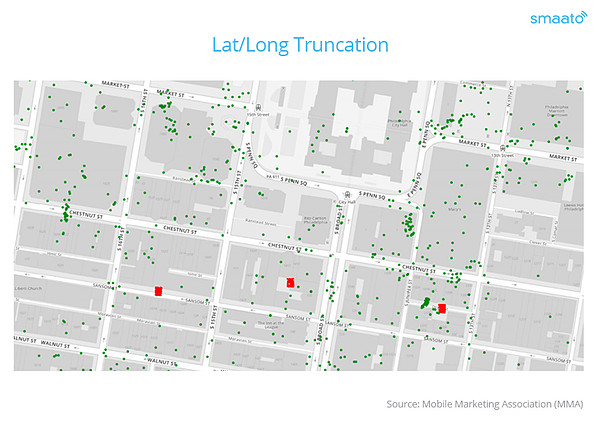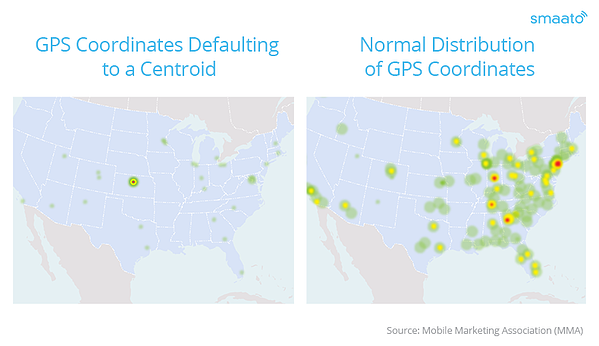With location data continuing to quickly gain traction in the advertising world as we head into 2019, Smaato is constantly improving the data quality on our exchange and enriching it with accurate location data to support the needs of our clients and their location-based mobile advertising campaigns. As an Account Manager, I work closely with my clients to ensure that they have access to transparent and accurate in-app inventory. By doing that, we can empower them to reach users at the right time and the right place — and deliver on their campaigns objectives.
Current State of Location-Based Mobile Advertising
Many of consumers’ favorite apps, from weather to navigation to social to dating, rely on location data. In a recent survey, over 40% of smartphone users claimed that they are more likely to use apps that personalize in-app content by location.1 But location data collected by apps is not just for content personalization — it has also become a cornerstone for targeted mobile advertising. In 2017, US companies spent over $17 billion on location-based mobile advertising, and this spending is forecasted to reach nearly $40 billion in 2022.2
Advertisers obviously value location for creating effective, targeted campaigns — and consumers are increasingly willing to share this information.
Why Should Publishers Care About Mobile Location Data?
Knowing users’ location can be a valuable component for mobile publishers to understand their users and develop new, useful features in their app. Beyond this, mobile location data can also be highly profitable.
The best way to make location data work for a publishers’ monetization strategy is to pass location data in their ad requests. Doing this provides advertisers with enhanced ad targeting capabilities and is proven to result in higher eCPMs and fill rates. On the Smaato platform in Q3 2018, apps that passed location data had +70% higher eCPMs and +50% higher fill rates on average. Looking more closely at specific app categories, we found that music apps that provided location data had a +126% higher fill rate than those without. In weather apps, eCPMs were +87% higher for impressions with location data than those without. Location-based mobile advertising is clearly a key part of advertisers’ digital ad campaigns, and the ability to attribute foot traffic to mobile advertising is becoming increasingly important. Mobile publishers lacking the ability to support this offline attribution as a key KPI may lose out on future revenue opportunities.
In addition to the increased premium that publishers with quality location data can obtain in the advertising marketplace, mobile publishers can also choose to license their first-party mobile location data to third-party data providers. These third-party providers can include data aggregators, media measurement firms, and advertiser brands looking to augment knowledge of consumer behavior.
Why Should Advertisers Care About Mobile Location Data?
Mobile location data is one of the most powerful ad targeting features. Advertisers can utilize users’ location history and geo-behavioral patterns to create location-based audiences or lookalike audiences. From the device location history, providers can also identify whether a certain place is the user’s home or workplace.
This granular location information enables the targeting of audiences based on both their physical location and the context of that location. Advertisers can personalize creatives with custom messaging that fits the unique situation of the user, whether that be lounging on the couch at home, browsing through the grocery store, or hanging out at a rock concert.
Geofencing is a method of location targeting in which the buyer sets up a virtual boundary around a specified location. This can be as simple as specifying a radius, (e.g. 1 kilometer), around the target location. This virtual geofence then triggers a response when a device passes through it, and an ad is delivered to the device. Geotargeting can also be further customized to only deliver ads to users who match specific criteria within the virtual fence.
Footfall attribution can then be used for buyers to understand the ROI of a campaign (e.g. based on store visits). For example, a car manufacturer wants to know if any mobile users that saw his in-app ad visited his dealership. Accurate footfall attribution modeling can track the user cycle to determine which visits to the dealership can be attributed to the in-app ad.
How Location-Based Mobile Advertising Works
Now that it’s clear why location-based mobile advertising is important, let’s turn to how it works.
Mobile Location Sources
There are several different sources of mobile location data, each of which has varying levels of precision and accuracy.
GPS is the most accurate and precise source of mobile location data. It is capable of identifying user location within 10 to 100 meters. GPS is available at a large scale, but it is also dependent on the user enabling GPS on their device.
WiFi can be just as accurate as GPS coordinates in buildings and areas with free public WiFi, such as libraries and cafes. The determining factor of just how accurate is the size of the WiFi zone.
Beacons are small devices that detect when a mobile device is nearby in order to determine how a device moves inside a store, and their data can be precise to within a couple of meters. However, access is problematic as the user must consent to passing this data and the technology requires a Bluetooth connection.
Carrier data and IP address are the least accurate sources of mobile location data, often varying significantly from the true location of the mobile user. Since IP addresses rotate — sometimes as often as every 30 days — it is difficult to match a device to a location over an extended period of time. For example, if a DSP is targeting a device with a specific IP address for a two-month campaign, a portion of the audience may disappear when the IP address changes. And since the accuracy of carrier data is determined based upon the radius of the nearest cell tower, a mobile user’s true location can be up to 10 km from their reported location.

Ad requests coming to the Smaato platform can contain one of two types of location data: GPS coordinates or location detection via IP address. GPS coordinates, which are recorded as latitude and longitude (lat/long), are either retrieved from the device via our SDK or provided by the publisher in the ad request. When no GPS coordinates are available in the ad request, Smaato can detect location data via IP address if the traffic coming from wifi and SDK or a DSL/corporate connection. This is of course transparently flagged as such.
How Accurate Is Location Data?
There are three pillars for measuring the quality of location data: accuracy, precision, and recency.
- Accuracy refers to the distance between a measured location and the actual location of the device at the time of measurement.
- Precision refers to the level of granularity for a particular piece of location data. For example, a lat/long coordinate comprised of two decimal points can pinpoint a mobile user’s location to within approximately one kilometer, while four decimal points enable accuracy to within approximately ten meters.
- Recency refers to the time between when the location data was collected from the mobile app or website and when that data was passed to the ad platforms. It’s important that ad requests sent by app publishers to exchanges clearly state how recently a data point was fetched. OpenRTB 2.4 includes parameters through which publishers can pass last data fetch time.

- Data source (see “Mobile Location Sources” above)
- Apps and GPS coordinates: Through an app’s settings, users can choose to only share GPS settings “while using” the respective app. This means their location information is available only when they are actively using the app. If an app doesn’t have access to quickly-refreshing location information, the data becomes stale and will not accurately represent the user’s current movement.
- Lack of accuracy standards and market education: There are currently no requirements regarding which fields are mandatory.
- Inaccurate interpretations: The number of digits in a lat/long coordinate are not necessarily a reliable measure of its accuracy. For example, in the graphic below, the green points represent single ad requests sent from devices with location data. The red boxes represent lat/long coordinates that have resulted from a publisher truncating all digits after the fifth decimal place.

- Centroids: Centroids are transposed coordinates where lat/long data is composed of default values or approximated location. For advertisers looking to target a whole city or state, centroids can be fine. However, since centroids are merely provide the approximate location of the user, they are not effective for granular location-based mobile advertising.

Source: 1 Localytics, January 2018 | 2 BIA/Kelsey, February 2018




